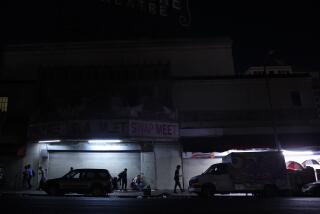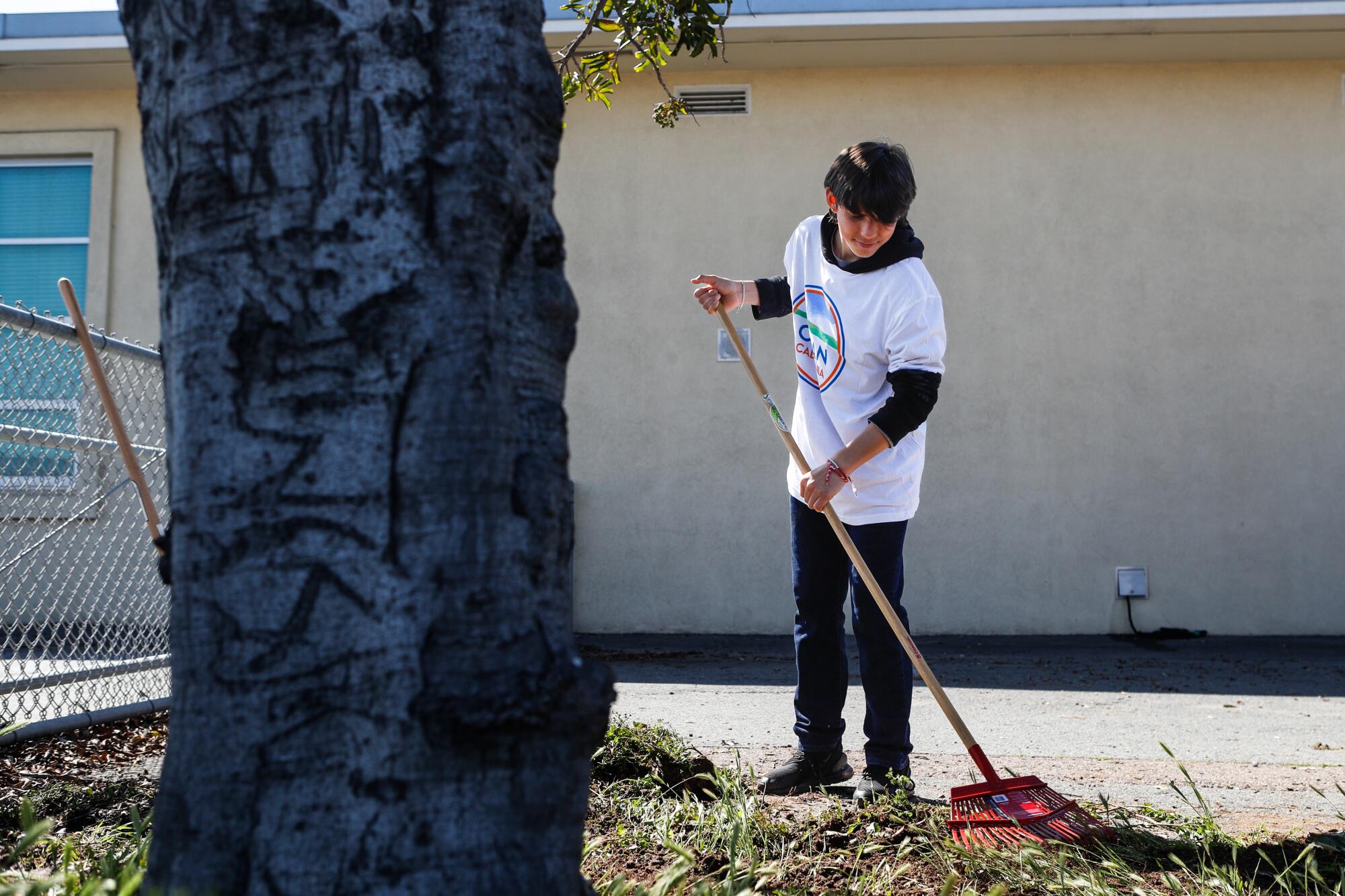
Community groups across San Diego County are partnering with state and federal agencies to reconnect neighborhoods in a ‘Clean California’ initiative.
SAN DIEGO — Community groups and state agencies are working together in search of opportunities to reconnect neighborhoods torn apart decades ago to make way for freeways, as they install murals, parks, gardens and more along some of San Diego’s busiest roads.
In the 1950s and 1960s, freeway construction boomed. These stretches of highway would slice through urban neighborhoods — particularly poor communities of color — separating them not only physically from their neighbors but also from economic opportunity, according to U.S. Department of Transportation officials.
Now, community groups and government agencies like Caltrans District 11 in San Diego County are collaborating to rectify the harm through various beautification projects.
This story is for subscribers
We offer subscribers exclusive access to our best journalism.
Thank you for your support.
“Our No. 1 job is to maintain the infrastructure, but it’s a new evolution to what Caltrans is,” said Barbara Cosio Moreno, public affairs manager at Caltrans District 11. “There’s nowhere to build anymore, so now it’s about maintaining and really focusing on the communities that [highways] go through … trying to really show that we are a part of the community.”
Many of these efforts are part of Gov. Gavin Newsom’s Clean California initiative, a $1.2-billion statewide effort to reduce litter along highways, beautify public spaces and create jobs.
Over the last week, transportation officials and community partners have been encouraging Californians to “spring into action” at a series of events to help turn public spaces into spaces of community pride, said Caltrans District 11 director Gustavo Dallarda.
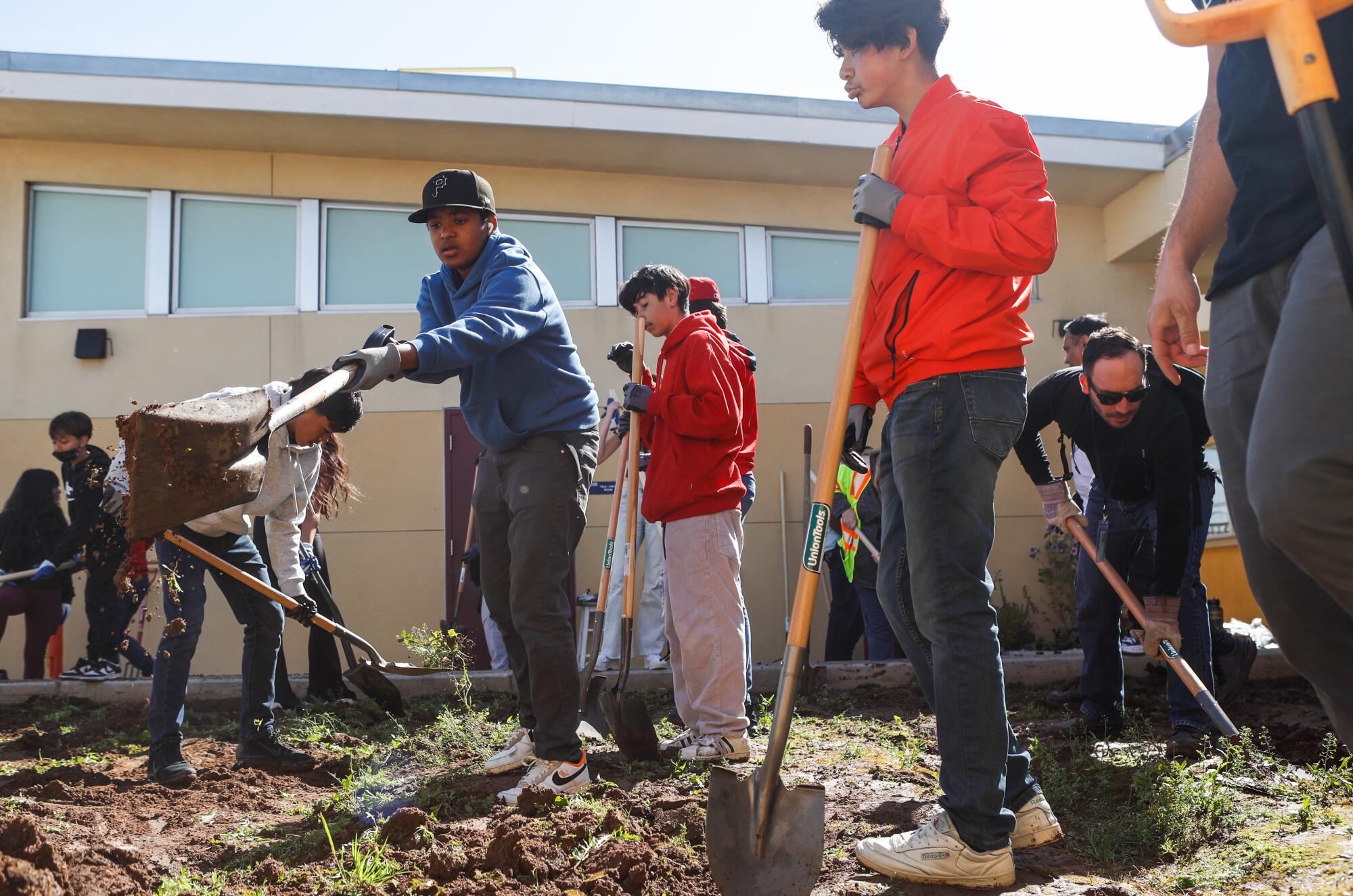
For San Diego County, the 10-day celebration kicked off in Otay Mesa on March 17, where Caltrans and a local nonprofit broke ground on a sustainability garden, pollinator patch — an area of native plants that attract bees, hummingbirds and butterflies — and composting site on Southwest Middle School’s campus.
South Bay Sustainable Communities works to build sustainable communities by encouraging and educating communities about environmental conservation, composting and sustainable urban farming, said Tina Matthias, its founder and executive director.
“It’s incredibly important to teach, because this information is not getting out fast enough from the city,” she added.
Students at Southwest Middle and a handful of other nearby schools had already been working with the nonprofit to collect organic waste and recyclables from their peers during lunch hours, learning firsthand how to divert waste from landfills.
“This is a student-led program within the schools,” Matthias said. “We supervise, we educate. And these leaders are getting back into the community at fairs and events, teaching adults how to do this.”
The school’s garden will be open to the larger community and eventually host composting and gardening demonstrations — as well as an orchard, she hopes.
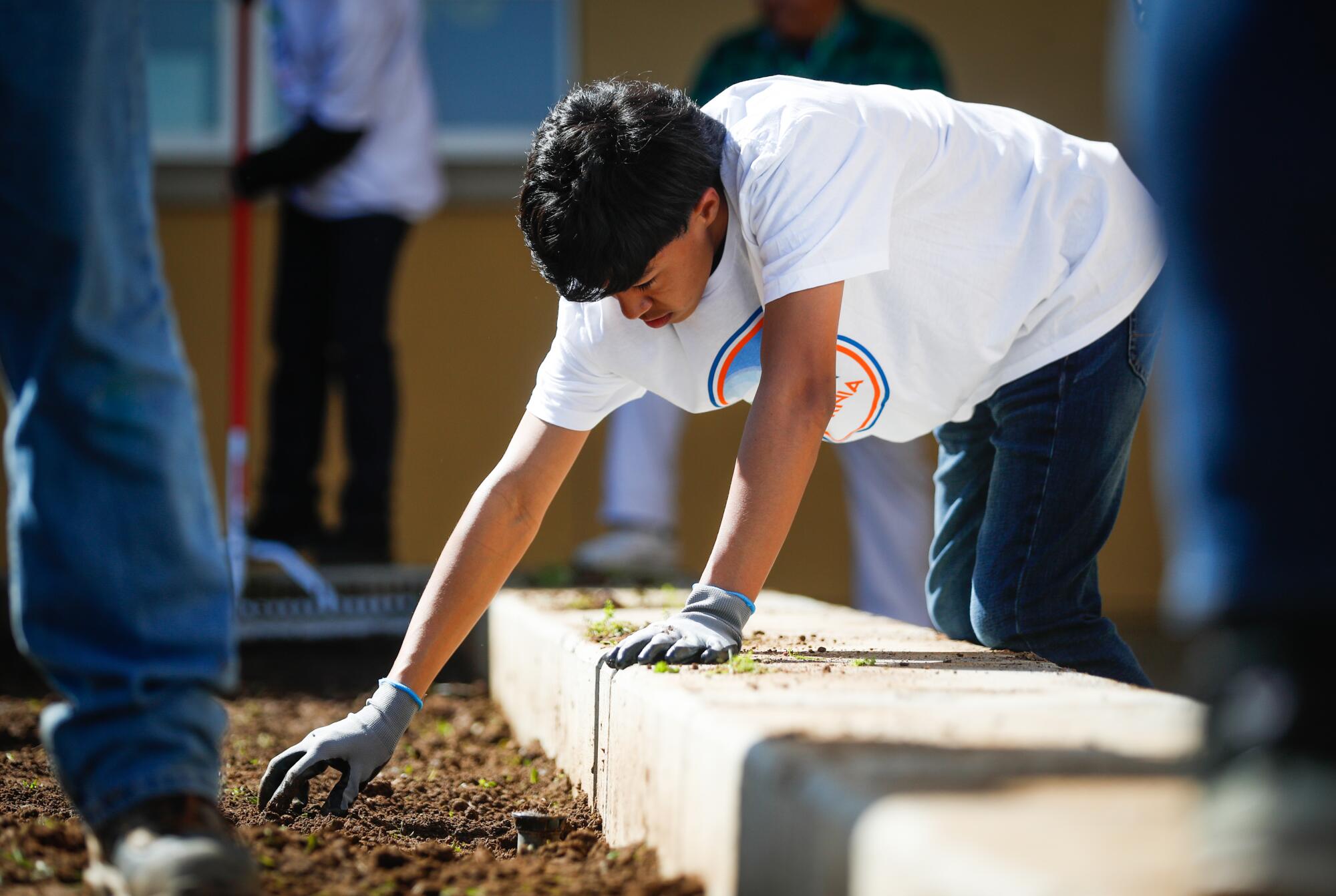
To curb illegal dumping and highway debris, Caltrans also hosted four community “dump days” for San Diegans to dispose of household waste safely for free at Caltrans maintenance yards across the county.
They also supported coastal cleanups, joined in a school mural installment and spoke with students about the benefits of urban greening.
The celebration culminated Saturday, as people got the unique opportunity to set foot — safely — on State Route 15 in southeastern San Diego while Caltrans closed it to car traffic and invited them to walk, bike and help beautify the freeway.
Hundreds of people — most on bicycles — took advantage of the opportunity. Some riders could be seen popping wheelies and performing other stunts. Others took a moment to chat in oddly peaceful freeway lanes.
The freeway will be open to pedestrians and cyclists and closed to motor vehicle traffic between State Route 94 and Harbor Drive from 10:30 a.m. to 1 p.m. during a Caltrans scheduled maintenance closure.
Since Clean California was launched in July 2021, Caltrans has removed nearly 1.4 million cubic yards of litter from state highways — the equivalent of more than 23,000 tons, or enough trash to fill more than 420 Olympic-size swimming pools.
Both federal and state leaders have announced their own versions of pilot programs aimed at reconnecting communities that were cut off by transportation infrastructure.
On the federal level, $1 billion in funding from the 2021 infrastructure law will be administered over five years to projects that restore a community’s connectivity, including removing transportation barriers and the converting underused highway right-of-ways.
City and community groups interested in such projects can apply for the state’s own Reconnecting Communities program, to which Caltrans was allocated $149 million in this year’s budget, later this spring or in early summer. A program guidelines workshop is tentatively scheduled for April or May.
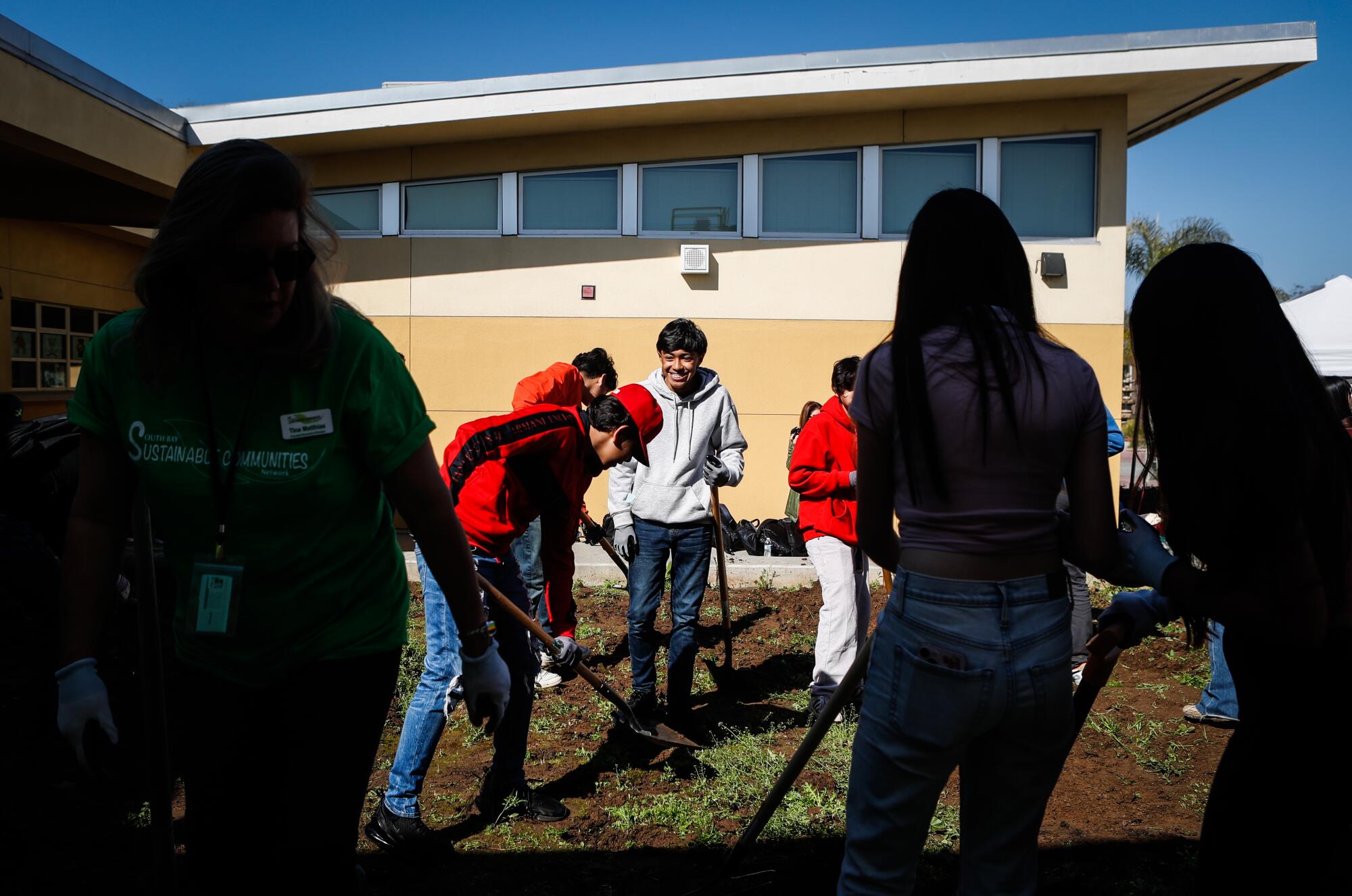
A little paint can go a long way
In Logan Heights, community groups are working to harness the power of public art installations to uplift and beautify the neighborhood’s blighted spaces.
Murals “connect one side of the community to another,” explained Joe Schipani, executive director of the Flint Public Art Project. “Our idea was to try to get people to cross borders that they might not.”
The Logan Heights Community Development Corporation is partnering with the Michigan-based organization to emulate what it has done with more than 300 murals across abandoned areas of Flint in the last five years.
These groups, in collaboration with TEAM LEWIS Foundation and Caltrans, are starting Logan Heights’ own “CommUnity Mural” project. Art installations throughout the neighborhood will include cultural markers to tell the neighborhood’s diverse history, said Natasha Lewis, director of economic development at the Logan Heights CDC.
In January, organizers gathered at Mixed Grounds Coffee to engage with the community and get feedback on what images and messages they would like to see in the murals. Hanging in the coffee shop were photos of the murals completed in Flint as examples of what could be done locally.
Back in Michigan, Schipani says the murals are doing their job connecting people and places citywide.
Chula Vista-based nonprofit SBCS partners with XoQUE-Art in Motion for mural project thanks to state grant funding
He points to data he’s gathered through an app that lets visitors scan QR codes on murals and shows a map of all the street art across town. The data show people are stopping at the murals, and many are going on to visit others, he says.
Among the projects in the works locally is a mural trying to do just that to the I-5 underpass on 32nd Street and make it more welcoming for people to cross.
Lewis says the idea for this particular mural location came from what she was hearing from residents during community cleanups. “These are spaces that they sometimes don’t go to because it’s very scary or nerve-racking to walk by,” she said.
The groups are talking with artists in the community to determine the mural’s concept. The goal is to start painting it in the fall or winter.
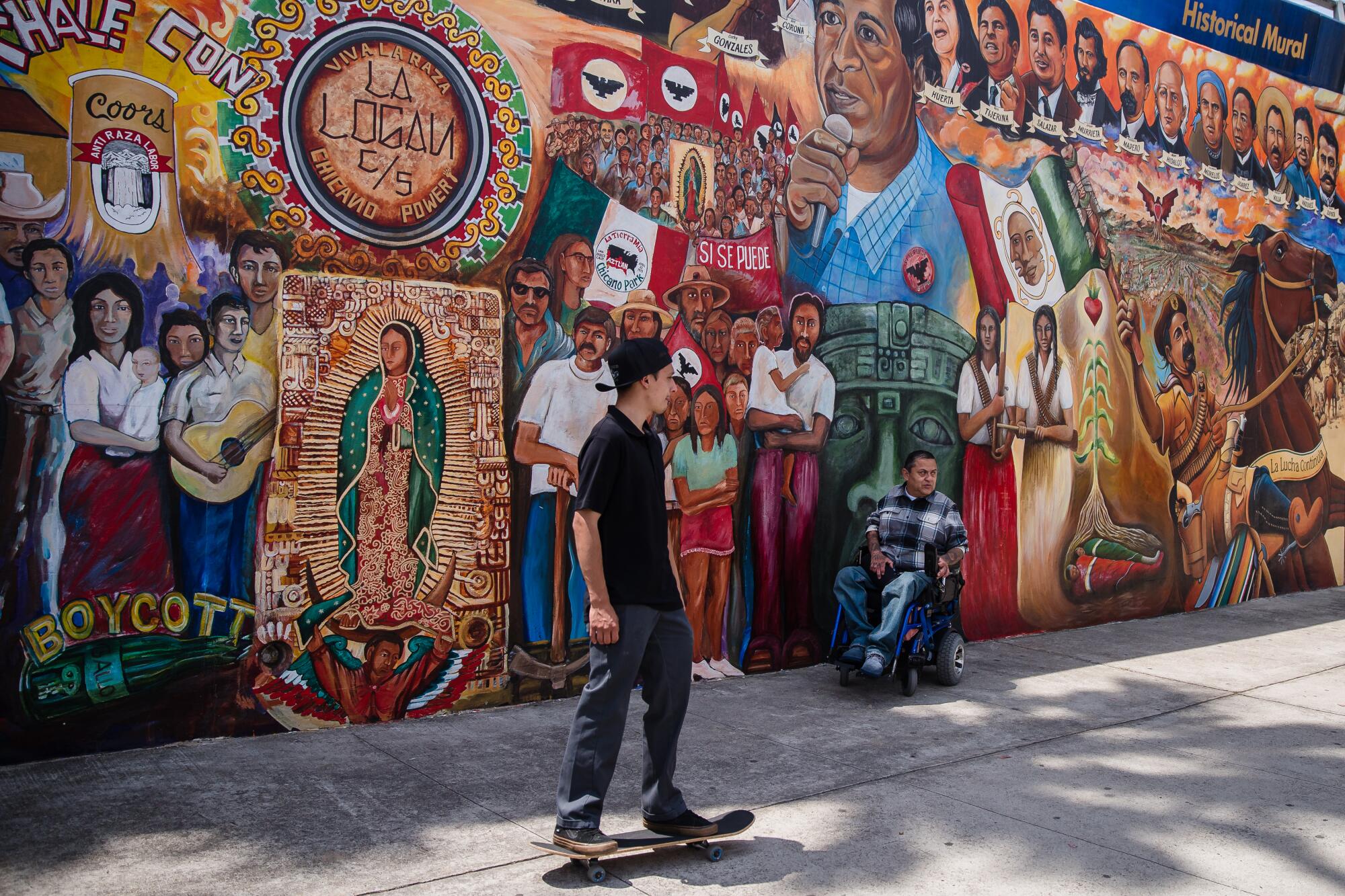
Emulating others’ success
For years, residents in neighboring Barrio Logan have already been reclaiming areas once lost to freeway infrastructure.
Tucked under the soaring San Diego-Coronado Bridge where it splits from Interstate 5, Chicano Park is well-known for the colorful murals adorning the pylons and its role as a cornerstone of the Chicano rights movement.
Construction of the freeway in the mid-1960s had cut the community in half, displacing many of its residents.
But in April 1970, when crews began to build a parking lot for a California Highway Patrol substation where the community had been pleading for a park, hundreds of residents joined community activists in taking over the site, successfully occupying the land under the bridge and beginning to build the park on their own.
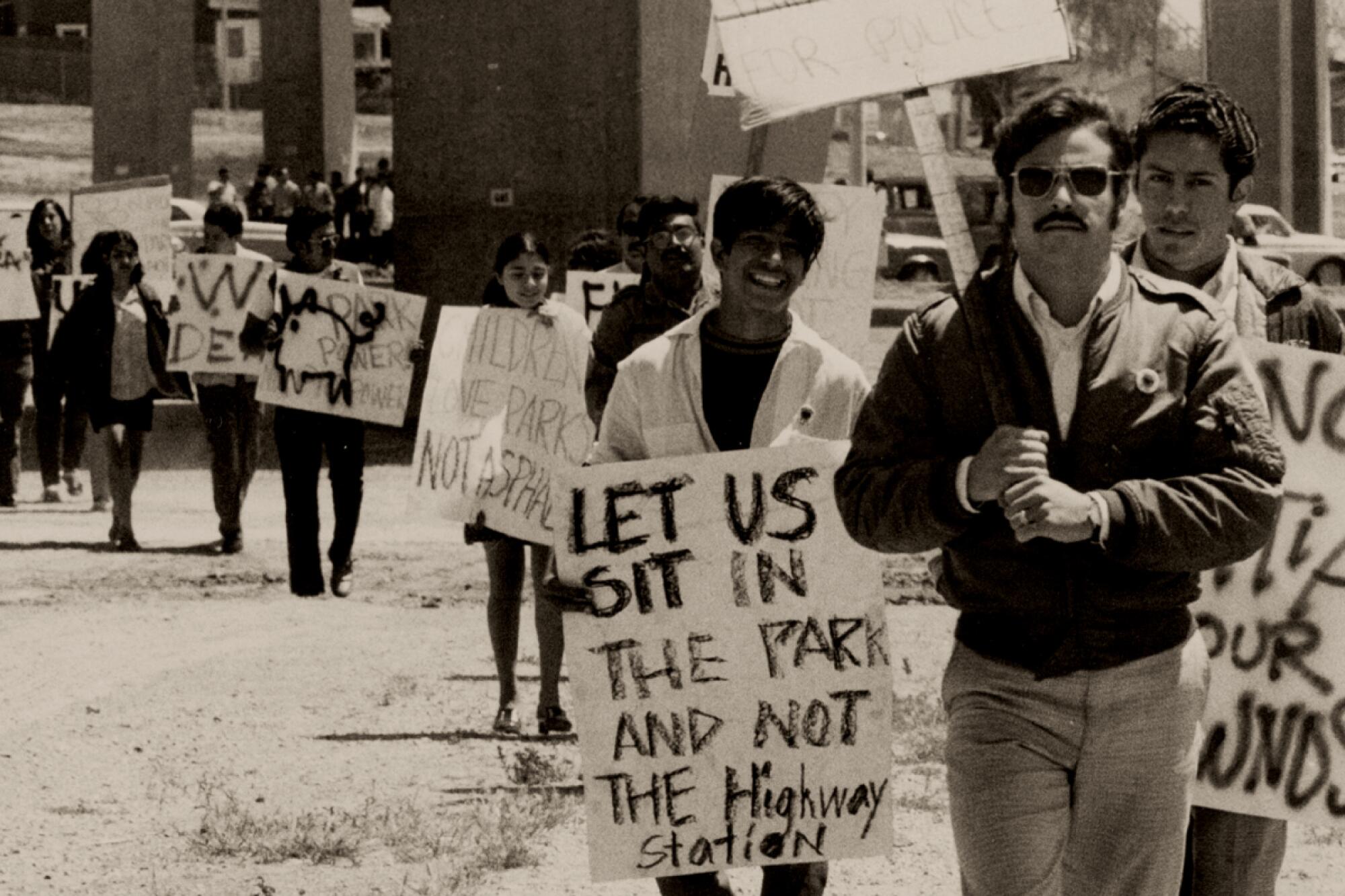
The park is now designated a national historic landmark, filled with various murals that commemorate the area’s vibrant culture and heroes of Mexican American history.
Now, community groups in Barrio Logan are working to find more ways to bring the neighborhood together like Chicano Park already successfully has.
Less than a mile away, a strip of land that runs along I-5 and Boston Avenue between 29th and 32nd streets is getting a makeover. The 4-acre property has been vacant and underutilized for years — until now.
Earlier this month, the Environmental Health Coalition, which fights for environmental justice in San Diego’s most impacted communities, joined Caltrans in breaking ground on Boston Linear Park there.
Caltrans district director Dallarda said the land is one of 11 locations across District 11 that were “turned back” to the community.
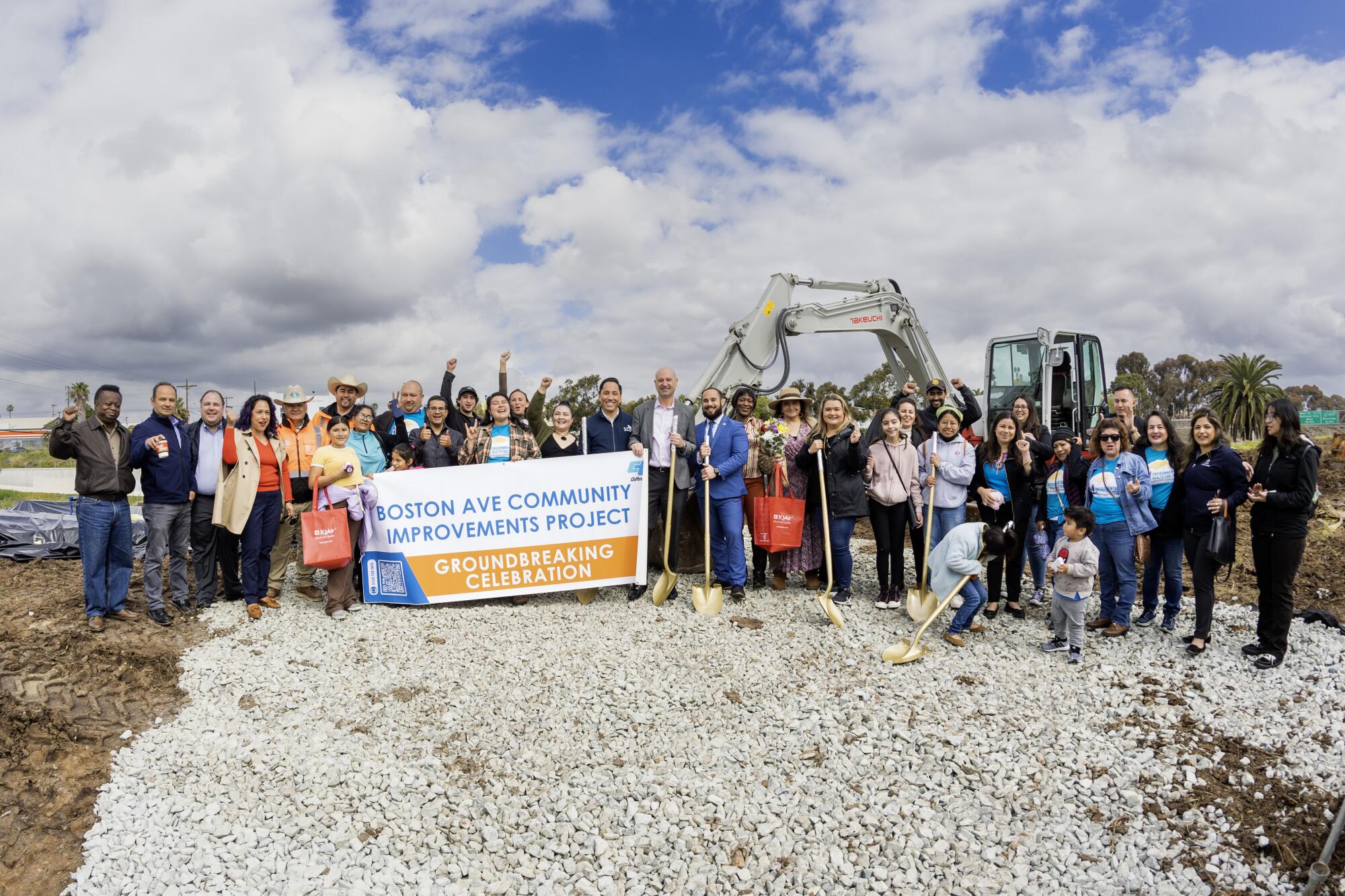
The land had previously been the site of a homeless encampment, regular drug use and truck parking for the surrounding industrial park. “It’s been pretty bad,” said EHC policy advocate Julie Corrales.
That stretch is the rare residential area in all of Barrio Logan, which is mostly zoned for mixed use and is dominated by industrial space. “So they really deserve a great space there,” she added.
Caltrans secured $2.8 million through Clean California grants to remediate the soil and grade the land. Now, the EHC is working with the city to secure additional grants to fund the about $10 million project, Corrales said.
The park will feature covered playgrounds, exercise equipment, a picnic area, a restroom, a community performance stage and plaza, a community garden and a splash pad.
“We envision the park as the beginning of this beautiful [community] reconnection,” Corrales said. “Transformation is coming, and this is the first of many groundbreakings of many projects to beautify our neighborhood.”
More to Read
Sign up for Essential California
The most important California stories and recommendations in your inbox every morning.
You may occasionally receive promotional content from the Los Angeles Times.
